Interview: Scott King on “Story Pitch”
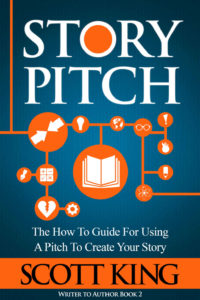
Story Pitch is in the NaNoWriMo Writing Tools bundle, a collection of a dozen books on writing. A portion of the proceeds goes directly to the Challenger Center for Space Science Education, a non-profit group created by the families of the crew of the Challenger shuttle. This bundle is only available through the end of November 2018.
Meet Scott!
Scott writes fiction, non-fiction, and is a game photographer. He produces an annual calendar that highlights board and other hobby games. He really, really likes coffee.
Story Pitch
Struggling to start your story or lost in the middle? You need a Story Pitch.
A standard pitch is meant for marketing and selling, but a Story Pitch is a powerful tool meant to be used when pre-writing and writing. It can help you jumpstart your novel, screenplay, comic, or whatever type of story you are trying to tell and it can be used as a corrective measure if you get off track during the writing process.
In this book, you’ll learn:
- The key elements to story
- How those elements are connected
- How to construct a Story Pitch
- How to use a Story Pitch for outlining
- How to use a Story Pitch to fix character problems
- How to use a Story Pitch when lost during writing
- How to use a Story Pitch for writing book blurbs
If you like honesty, no bull, a bunch of humor, and tons of examples in your writing guides, then you’ll love Scott King’s Story Pitch.
Excerpt
A pitch is a description of a story that a person uses to sell it. In Hollywood, it might be that a writer is pitching a screenplay to producers, hoping they buy it. In traditional publishing, it might be an author pitching a novel to an agent who would then pitch it to one of the big six publishers.
Anytime you meet someone and they ask you about what you’ve written, whether it’s a novella, short story, or full-blown three-hundred-thousand-word epic, what you say back to them is a pitch.
Pitching is part of a writer’s world. No matter how much you might hate giving one, you can’t escape it. Book blurbs that appear on the back of a novel or on a retailer website are also pitches. They are carefully crafted descriptions meant to sell the story to a potential reader.
You can use a Story Pitch to create all the pitches I described above, but the main goal of a Story Pitch isn’t to sell the idea of your story to someone else. A Story Pitch is meant to be a tool you can use when pre-writing, writing, and re-writing your story.
Whittled down, a Story Pitch is a synopsis that introduces the key elements of your story, serves as a guide post while writing, and creates enough interest to hook the listener so they’ll want more.
– from Story Pitch by Scott King
The Interview
You write both fiction and non-fiction; do you enjoy one over the other?
I enjoy them equally but for different reasons. Fiction is my way of having fun. It’s creating worlds and characters that readers care about. I use it to offer escape, fun, and to touch upon themes that I think are important. In a different time of my life I was a college professor and doing non-fiction scratches that teaching itch. It’s not working one on one with students, but I still get to feel like I’m helping people.
The books in your Writer to Author series are all connected to fiction books of yours. Why did you decided to link your fiction with your non-fiction?
One of the biggest advantage to taking a class in writing versus reading a book about writing is that you get to see the mistakes that other students make in their writing and how they go about fixing those mistakes. By tying my non-fiction books to my fiction books it allows the reader to go on a journey with me. When I screw something up they get to see first hand how I fix it. My book on outlining doesn’t just teach how to outline, but shows how I outlined an actual novel. Want to know how a Story Pitch can be used to fix a problem? I use it to solve a major problem I was having in the original draft of my dystopian thriller Resist Them.
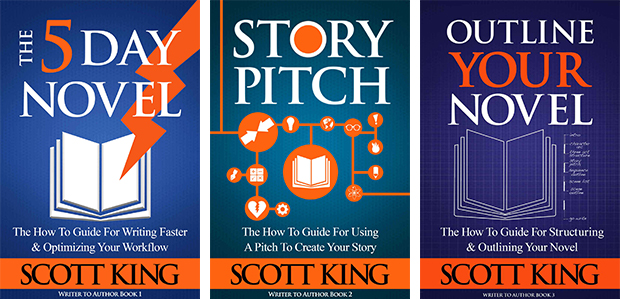
Why make the the tone of your non-fiction books so non-traditional?
I like coffee and poop jokes. I’m not stuffy. That shows in my books. They aren’t written in an academic style. They are written as if me and the reader are hanging out in a cool coffee shop and just talking shop about publishing and the craft of writing. It allows me to write the books in my natural voice which means I get to focus more on content than presentation.
How did you come up with the idea for your book Story Pitch?
I had previously published Finish The Script! and The Five Day Novel. One of the most popular subjects covered in both books was how to write a pitch. Since the interest seemed to be there, I decided to flesh out the concept into a full book, with a focus not just on how to write a pitch, but how to use it as a tool for pre-writing and re-writing.
What are the basic building blocks when writing a Story Pitch?
The core of every pitch has four things: Character, the Character’s Want, an antagonistic force preventing them from achieving their want, and the stakes, which is what happens if the want isn’t achieved.
So looking at Avengers: Infinity War it would break down something like this:
Character: Thanos
Want: To put together the infinity gauntlet (so he can wipe out half of all life forms to prevent overpopulation and the lack of resources)
Conflict: The Avengers are trying to stop him from doing so.
Stakes: If he fails the universe is doomed.
Things like genre, voice, and themes can all impact a pitch too, but this should give you an idea of what basic elements are and how they might fit together.
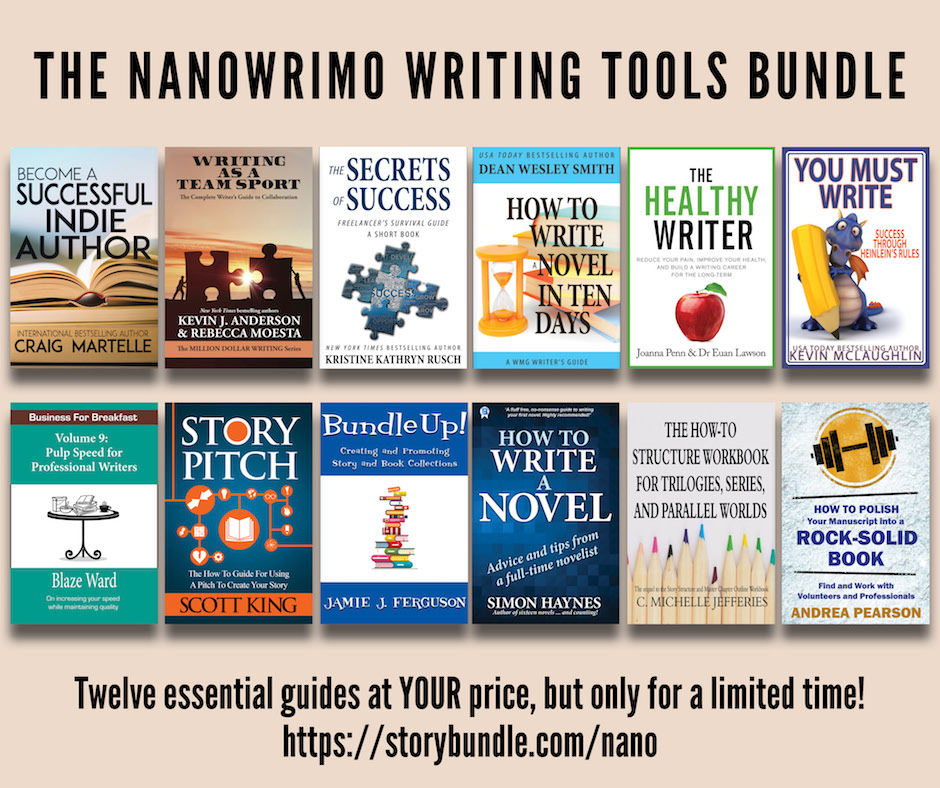
How can an author use a Story Pitch?
If you talk to most authors, they think pitches are important for selling a book. You pitch to an agent via a query letter or you pitch to a publisher. Then you might pitch to a potential reader via the synopsis on the back cover or the description on an online store. A story pitch is great for those things but it can also serve as a guide when writing or as a test when pre-writing.
When I was a college professor, I needed some sort of gauge to measure a student’s story before they started writing it. I had them write pitches, just so I could make sure they had a clear goal with the story they wanted to tell and I realized in doing so that it helped them stay on track through the writing process.
That’s where I think a Story Pitch really shines, helping writers shape their idea before writing. It’s also a great test when rewriting because you can compare your current draft to your original pitch. Doing so allows you to see where an element might have gotten off track or gone wrong.
Why might an author choose to write a Story Pitch for each character in their story?
Story Pitches are centered on individual characters. If a story has multiple POVs or a writer is simply struggling to understand a supporting character, writing a Story Pitch can help clear things up.
Earlier I used the example of Thanos from Infinity War. Although he is the “villain” in many ways he is the main character of the movie. He has the biggest wants. He is the most proactive of all the characters. He even has a slight arc in weighing what he is willing to sacrifice to gain his deepest wants.
Writing a Story Pitch centering on him makes sense, but the movie was an ensemble piece. It has a huge cast. Going back and writing addition pitches for the other characters would aid in fleshing out those additional story lines and themes that a writer might want to touch upon.
In Wrath of Dragons, the first book in your Elderealm series, you do some interesting and unexpected things with your dragon characters—especially with Doug the dragon. What inspired you to write about a dragon turned into a human?
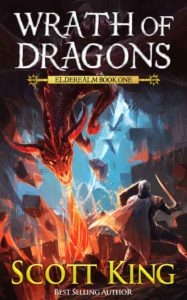 There are a lot of fantasy novels where dragons are shape shifters. That’s not a new trope. What I did that was a bit sneaky is play a bit with expectations at the start of Wrath of Dragons. I set the story up so that readers would think dragons were non-intelligent beasts, because that is the view one of the POV characters has. Within the first two chapters that changes and the readers along with the POV character realize that there is more going on than they realized.
There are a lot of fantasy novels where dragons are shape shifters. That’s not a new trope. What I did that was a bit sneaky is play a bit with expectations at the start of Wrath of Dragons. I set the story up so that readers would think dragons were non-intelligent beasts, because that is the view one of the POV characters has. Within the first two chapters that changes and the readers along with the POV character realize that there is more going on than they realized.
Doug’s whole story in the not just the first novel, but the series as a whole is that he is someone trying to learn how to connect with others. He’s an outcast as a dragon. He is trapped in human form. He has no family. He is simply looking for his place in the world. Although this is a fantastical setting, I think that’s something a lot of people can relate to. It’s probably why he has become one of the fan favorite characters of the series.
With so much working having to go into all stages of publishing as an indie author, do you still have fun writing?
Heck yeah. I’m a story person first. Money is great, and I’m lucky enough to make a full time income doing what I’m doing, but as things are now I make enough and I don’t need to push to make more. In a way that gives me a bit of freedom with my writing. Instead of fast tracking the next book in a series to push for quick releases, I can take a break and write a novella, non-fiction book, or whatever I want. Writing what I feel I NEED to write next instead of what I SHOULD write next keeps things fun. It lets me feel like I am prioritizing story of business.
And to be clear, there is no right or wrong reason to write. I know a bunch of authors who write and it’s a job to them. Their main goal is providing for their family or they are trying to earn a hire Amazon rank. Those reasons to write are just as legit as my reasons.
In addition to being an author, you’re also a board game photographer! What do you enjoy most about this type of photography?
People are the worst when it comes to photography. People have things they don’t like about themselves… maybe an old scar, the shape of their jaw line, the thickness of their eyebrows, or whatever. In photos they want whatever that thing they dislike to be hidden or minimized. As a photographer I like to capture things as they are and sometimes if you are photographing a person that means photographing something they don’t want. This can lead to cranky humans because you took a real portrait showing who they really are instead of what they want to appear as.
Because people can be a pain to make happy, I gravitated toward non-people photography, mostly food and landscape. That eventually lead to board games and to be honest, board games are great because they don’t have opinions of themselves. Plus publishers and designers are happy when you take real photos of their games. It’s a win-win!
You co-wrote your newest non-fiction book, Learn How to Write a Novel by Reading Harry Potter with Clark Chamberlain. What led the two of you to write this book?
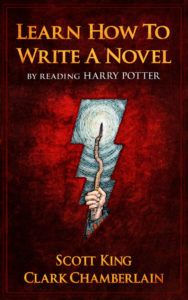 Clark had done a Harry Potter class and approached me about teaming up for additional courses. Courses are not my thing, but it gave me the idea of teaming up for a book, and this book is what we decided to do!
Clark had done a Harry Potter class and approached me about teaming up for additional courses. Courses are not my thing, but it gave me the idea of teaming up for a book, and this book is what we decided to do!
Basically the book breaks down as a 101 class in how to write a novel and it uses Harry Potter and the Sorcerer’s Stone as the example for all the lessons. In a way it’s a layered so that someone who knows nothing about writing could come in and read it and leave with an understanding of what it takes to write a novel. On the other hand, if someone already has multiple books under their belt and knows what they are doing, Learn How to Write a Novel by Reading Harry Potter is a great re-read companion. The book is structured by chapter so you can read a chapter of The Sorcerer’s Stone and then read a chapter of Learn How to Write a Novel to see an analysis of that chapter!
What story (or stories) are you working on now?
Soooo much. It’s been a strange year.
I cranked out the first draft of Unchained Shadows, the next book in my Elderealm series. It was supposed to only be about 100k, but is pushing 200k. I’m super excited about it. It’s GOOD, but messy because my first drafts are always super messy so it needs a heavy polish and I will wrap it up by the end of the year.
I have half a dozen short stories I’m shopping around. I also have a sci-fi short story I’m turning into a novella. It’s strange and more literary than mainstream. It will probably be out sometime next spring.
Then this past summer our dog, Winchell passed away. He was raised and trained to be a seeing eye dog. It was very hard and still is for both myself and my wife, Lisa. Lisa raised him from a pup and only though a weird quirk was she able to get him back from The Seeing Eye. As part of the grieving process, I wrote a 40k sci-fi novella based on his story. The first draft is done and it needs a re-write. I’ll probably tie it into my next non-fiction book which will be about rewriting. That should also come out sometime next year!
About Scott
Scott King, an international best selling author, was born in Washington D.C. and raised in Ocean City, Maryland. He received his undergraduate degree in film from Towson University, and his M.F.A. in film from American University.
Until moving to follow his wife’s career, King worked as college professor teaching photography, digital arts, and writing related classes. He now works full time as an author.
